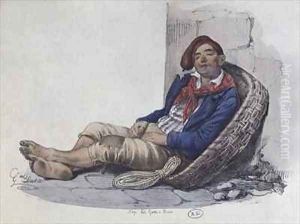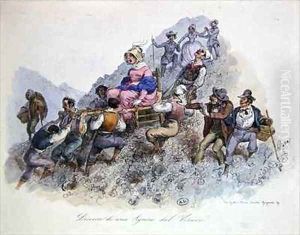Dura, Gaetano Paintings
Gaetano Dura was an Italian engraver and printmaker born in Naples in 1744. Although not as widely known as some of his contemporaries, Dura contributed to the artistic scene with his distinctive style and technique. He was part of the late Baroque period that transitioned into the Rococo and early Neoclassical era, a time of significant changes in the arts in Europe.
During his lifetime, Dura developed a style that was characterized by its fine detail and clear lines. He was particularly known for his skill in engraving, a form of printmaking where the artist etches a design onto a metal plate, usually copper, with a sharp tool called a burin. Once the plate was inked and then pressed onto paper, it would create a detailed image. This technique was popular during the 18th century for reproducing works of art, which allowed for their wider distribution and appreciation.
Dura's works included religious subjects, portraits, and reproductions of famous paintings. He was part of a tradition of Italian engravers who were instrumental in bringing the works of Italian masters to a broader audience. His engravings were appreciated for their precision and clarity, which allowed for the nuances of the original paintings to be seen in printed form. Dura’s contributions to the field of printmaking were recognized by his peers and by collectors who sought after his prints for their quality and craftsmanship.
Gaetano Dura passed away in 1795. Although his name might not be as renowned as some of his contemporaries, his work remains a testament to the skill and artistry of engravers in the late 18th century. Today, his engravings can be found in various art collections and continue to be studied by those interested in the history of printmaking and the dissemination of art during the period.

